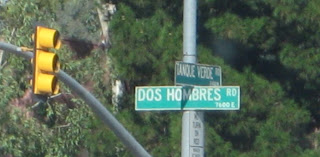As I finish up this class I am actually quite glad I didn't make it into CatScan (my secret hope at the beginning of the semester). Border Beat is a site that I am proud to have been a part of, and I enjoyed searching for border-related stories. So my advice for new Border Beat students is...
Enjoy the class! Be stretched as a journalist, and get some good interviews. I have found that people you may be intimidated to talk to are often willing to do an interview. Start learning soundslides and audacity right away so that when it comes time for you to use them, it won't be so stressful, and you can do your project well.
Do work that you are proud of, and think like a journalist. I think the key to finding great stories is always being on the lookout. Bring a journal, a pen and a camera with you wherever you go (when possible). I hate when I see a great story right in front of me, and I don't have the tools to get an interview or photo. When you are always on the lookout, finding good stories will be easier than you think.
Don't complain. You are paying to be here (or someone else is paying for you to be here), so when things seem too hard or you feel you aren't getting anywhere, ask questions and figure out what you can do to change that. Don't waste this class because it is such a great opportunity to be creative, challenge yourself, and publish really great work that you can hopefully use on your resume.
Border Beat was a wonderful class, and I hope that next semester's class adds even more great content and media, and maybe you guys can win another award.
Signing out for my final blog,
Ashley Donde


 photo by baldtechnologist, flickr.com)
photo by baldtechnologist, flickr.com)






 Last year I attended the All Soul's Procession in downtown Tucson, watching as thousands of Southern Arizonan's came to celebrate
Last year I attended the All Soul's Procession in downtown Tucson, watching as thousands of Southern Arizonan's came to celebrate 











 The seven pointed pinata has seven points representing the seven deadly sins (envy, sloth, gluttony, greed, lust, wrath and pride).
The seven pointed pinata has seven points representing the seven deadly sins (envy, sloth, gluttony, greed, lust, wrath and pride). 








 Above: Camino Seco - "Dry Way"
Above: Camino Seco - "Dry Way"

